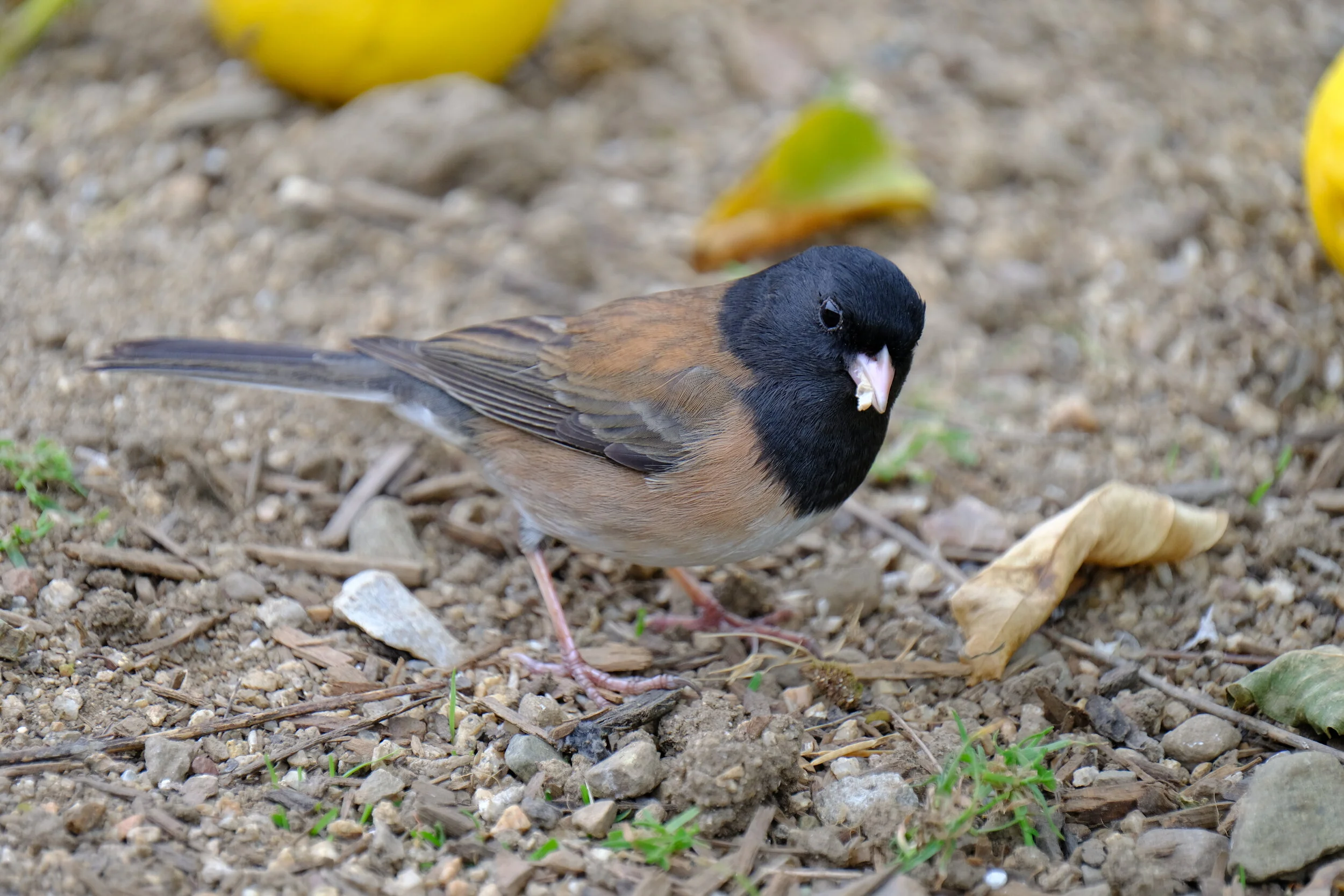Dark-eyed Junco
by Dave Zittin
This small sparrow species is common in Santa Clara County. Although they tend to be found in forested areas, they seem to be at home in our backyards, especially if there is something to eat. On the California Coast they can be found throughout the year. They will eat suet, but seem to prefer grain.
Dark-eyed Junco. Photo: Brooke Miller
The black head and the auburn-colored back of the adult bird makes this species easy to identify. Watch their tails, especially when they fly. The outer feathers are white. It has been suggested that the white feathers advertise “I see you” to a predator and you will be wasting your time if you try to catch me.
Immature juncos resemble the adult in size and shape, but do not have the solid adult colors seen on the head, breast and belly, Instead these areas on the immature bird show obvious streaking. However, both the immature and the adult juncos do have white outer tail feathers that are especially obvious when the bird flies away from the observer.
Juvenile Dark-eyed Junco. Photo: Dave Zittin
Brood parasitism is when an individual relies on another individual to rear its young. Dark- eyed Juncos are often the hosts of such parasitism by the Brown-headed Cowbird. In the photo showing two birds, the larger, gray bird is an immature Brown-headed Cowbird which is being raised by a Dark-eyed Junco and the photo shows the junco about to feed the cowbird. Don't be surprised to see this in your backyard someday especially if you have feeders that draw juncos.
Dark-eyed Junco feeding juvenile Brown-headed Cowbird. Photo: Dave Zittin
Explore
Visit All About Birds: Dark-eyed Junco for more information on this bird.
More Backyard Bird Information
View more common Santa Clara County Backyard Birds
Visit our Backyard Birding page
Read our Notes and Tips from a Backyard Birder series
Tell us what you’re seeing in your yard! Send your notes, photos, and sound clips to backyardbirds@scvas.org. We’ll feature your submittals on our website.
Banner Photo: Dark-eyed Junco by Dave Zittin


